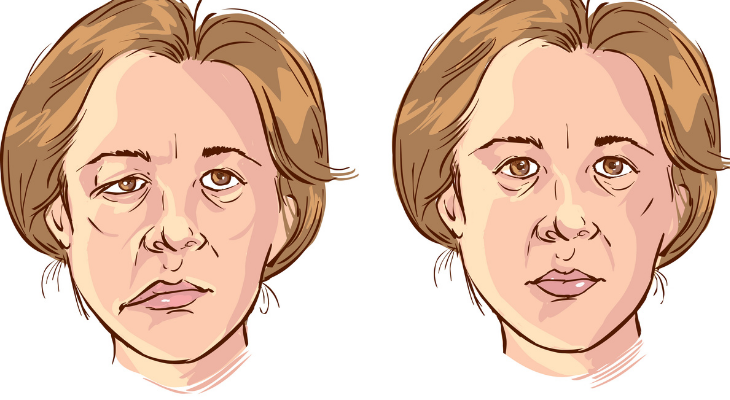
Bells palsy is a condition of temporary partial facial paralysis. This condition is caused by the 7th facial nerve or called the facial nerve, which functions in controlling the facial muscles to become inflamed. The specific cause of this condition is not yet known, but several things are known to increase the risk of developing Beels palsy, such as a history of diabetes, old age, pregnant women, people with respiratory infections, and several cases reported as a result of sudden exposure to extreme cold.
The condition of Bells palsy can be identified by paying attention to the appearance of symptoms in sufferers which include:
- Weskness onone side of the face from forehead to chin.
- Occurrence of a muscle on the face, difficulty smiling, difficulty raising eyebrows, and difficulty closing eyes.
- Hearing becomes more sensitive ( Hearing in the ear on the parallyzed side of the face feels louder).
- Tongue feels numb or lacks the ability to teste.
This condition can be handled one of them by Physiotherapy. Physiotherapy can provide various interventions to acccelerate the healing process and revent ongoing conditions. There are several interventions that Physiotherapy can provide, such as:
Infra Red
Infra Red provides a physiological effect by increasing metabolism in the superficial layers of the skin so that the supply of nutrients and oxygen to the tissues increases; this will helps relax muscles and increase the muscles ability to contract.
Massage
Massage is a stimulation technique fro soft tissue that aims to increase flexibility, prevent tissue adhesions by streatching the superfical tissue, stimulate sensory receptors in skin tissue resulting in a relaxing effect, improve metabolic processes, reduce spasms, and feel thick on The only form of electric current used on the face is an interrupted Direct Current, also known as a Galvanic Curent. This is given to preserve most facial muscles and prevent atrophy in bell palsy cases.
Mirror Exercise Therapy
In the condition of bells palsy, exercises performed in front of a mirror will provide biofeedback, which is in the form of a control mechanism of a biological system by re-entering the output generated from the biological system, with the ultimate goal of obtaining a new output that is more profittable for that system. This therapy must br implemented calmly so that the patient can concentrate more on doing facial movement exercises. Giving Mirror Exercise aims to increase facial muscle strength and retrain the functional movement of facial musclese face lesion.







